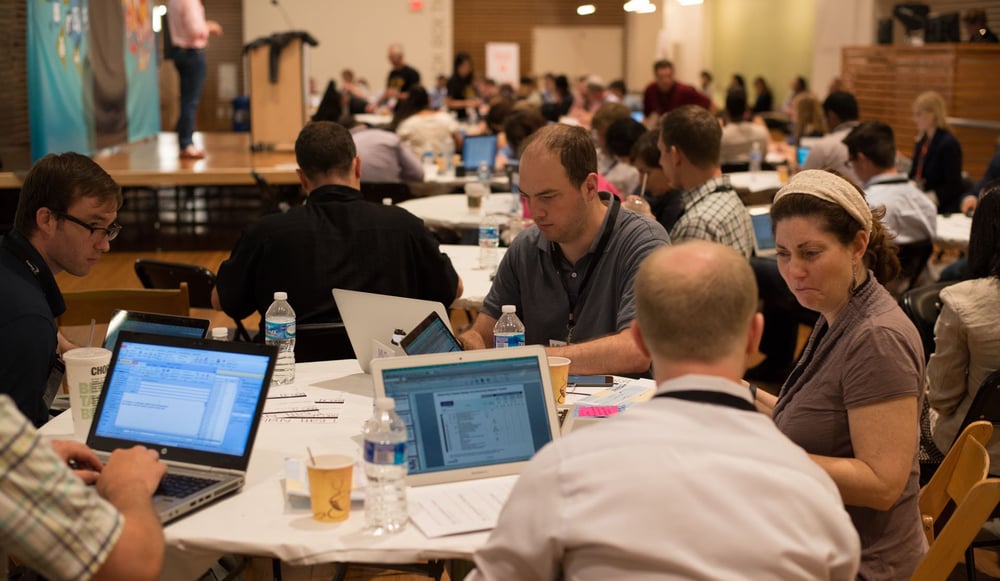Hear that? It’s the Sound of a New Decade In Voice
Modev News VOICE Talks 21-04-26 Pete Erickson 5 min read

If you’re like most people you’ve likely already embraced voice-enabled technologies slowly. Little by little, you might have added a smart plug here, a Google Assistant or a voice-enabled remote there. But there’s also those less conscientious opportunities that you’ve used voice, like driving along in your car and asking it to dial your sister, or quickly asking your smartphone for the weather forecast, or asking it to find nearby delivery recommendations.
Voice is happening much more quickly than we realize.
There is a reason that Clubhouse is growing like gangbusters. People like to talk. Conversational technologies are proliferating our daily lives much more rapidly than we realize. In fact, a report from Voicebot.ai states that as of January 2020, nearly 130 million U.S. adults say they used a voice assistant while driving. Meanwhile, a report from OC&C Strategy Consultants suggests that voice shopping will rise to $40 billion by 2022.
My personal prediction? Our “ick factor” about touching the same switches and buttons as others is bound to increase usage in a post-pandemic world.
“Voice is the new user interface. It is simple, natural and ubiquitous,” shares Ashwin Ram, who tackles the tough challenges in voice through cloud computing as Technical Director, AI, Google Cloud. With consumer expectations for voice continuing to increase, it is no wonder that 91 percent of businesses are planning to invest in voice-enabled technologies in an effort to meet growing consumer demand for enhanced user experiences. In fact, nearly 70% of all business respondents to a collaborative report between AI company Haptik and VOICE community organizer Modev stated that they have published a professional skill, action, chatbot, or custom application using conversational tech.
What makes voice or conversational technology possible?
Language is inherently ambiguous. In fact, data from asking Google Assistant how much context is factored into the way we speak finds that people ask how to set an alarm in more than 5,000 different ways,” says Sofia Altuna, host of VOICE Talks.
Think about it. How many times have you asked Alexa or Google to turn on the bathroom lights and they’ve turned on ALL the lights? Well, it turns out that engineers and designers have recognized how context is meaningful to our voice interactions. These engineers are focused on the data and fundamentals to ensure that our voice-enabled devices work properly and that they are able to understand context correctly when we’re asking our questions or making our commands so that our requests are only made one time.
Who will power the future of voice? There are teams of people, engineers, and startups out there working to make it happen.
Many businesses are starting to recognize that voice technology is the expected method of communication for the future, especially given that 55% of US households are expected to own a smart speaker in 2022. However, to build a good speech system you need the right tools, system, and data to bring it all together. There are a number of businesses that are specializing in the nascent and emerging world of voice, bringing together complex lingo and technologies, including artificial intelligence (AI), natural language understanding (NLU) and machine learning, that make your conversational devices work.
So we don’t end up with all the lights on so to speak, Jan König, co-founder and CEO of voice experience development company, Jovo, predicts that voice engineers will continue to prioritize a “context first” approach to offer the best experience for voice device users. That way, users will be able to receive the right information, at the right time, and on the right device.
Other startup companies in the sector include Doppio Games, a conversational game developer that lets your voice guide you through the experiences in its games.
Rumble Studio allows users to record and publish guest interviews in minutes through conversational A.I.
Have an idea and want to try to code it yourself? Voiceflow is one company that makes it incredibly easy to design, build and prototype conversational apps without any coding.
So what does a new decade in voice sound like exactly?
The foundational technologies of voice, including AI, NLU, and machine learning are all evolving making ultimate predictions to the future of voice.
“There’s so much we don’t know that makes the future fundamentally impossible to predict. But that’s the joy of it,” says Jeff Adams, CEO of Cobalt. “The future is in our blindspot and that makes it an adventure. We are going to create it and see it when it gets here.”
Join the conversation
Produced by Modev and presented by Google Assistant, VOICE Talks is the fastest-growing internet technology show featuring industry leaders discussing the latest developments relating to AI-powered voice technologies. Developers, marketers, gamers and voice tech enthusiasts can tune-in live for the chance to interact and ask questions with the show’s host. Tune into the next episode monthly at www.voicetalks.ai.
